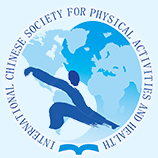Document Type
Article
Keywords
pandemic, physical, mental, stress, age
Publication Date
10-19-2023
Abstract
The COVID-19 Pandemic has globally impacted children’s physical activity and mental health outcomes since the transition to remote learning (Štveráková, et al., 2021). Children and adults may encounter negative mental health related consequences, higher stress, and a significant lack of physical activity while in physical and social isolation (Clemente-Suárez, 2022). In particular, school-aged children have experienced a significant reduction in physical activity since transitioning to remote learning and do not have sufficient opportunities to make up for this loss while engaged in remote learning (Štveráková, et al., 2021). Increased physical activity has been consistently correlated with positive mental health outcomes and a reduction of perceived stress in the literature. The purpose of this study, focusing specifically on households participating in remote learning, was to understand the links among access to physical activity opportunities, parental stress, and parent and child mental health outcomes during the Pandemic. In addition, this study will examine how parental stress, mental health and physical activity opportunities may vary depending on the age and socioeconomic status (SES) of the child. Results indicated that most children achieved less than the recommended amount of physical activity and had an increase of at least one mental health concern during remote learning throughout the Pandemic. Parental stress levels were negatively associated with children’s time spent in physical activity, and positively associated with the severity of parents’ mental health concerns and the number of children’s mental health concerns. Implications for school personnel are discussed.
DOI
https://doi.org/10.18122/ijpah.2.3.7.boisestate
Recommended Citation
Watson, Amber; Fedewa, Alicia; and Tischner, Clair
(2023)
"Physical Activity and Mental Health of Youth During the COVID-19 Pandemic,"
International Journal of Physical Activity and Health: Vol. 2:
Iss.
3, Article 7.
DOI: https://doi.org/10.18122/ijpah.2.3.7.boisestate
Available at:
https://scholarworks.boisestate.edu/ijpah/vol2/iss3/7
Included in
Exercise Science Commons, Health and Physical Education Commons, Public Health Commons, Sports Studies Commons


